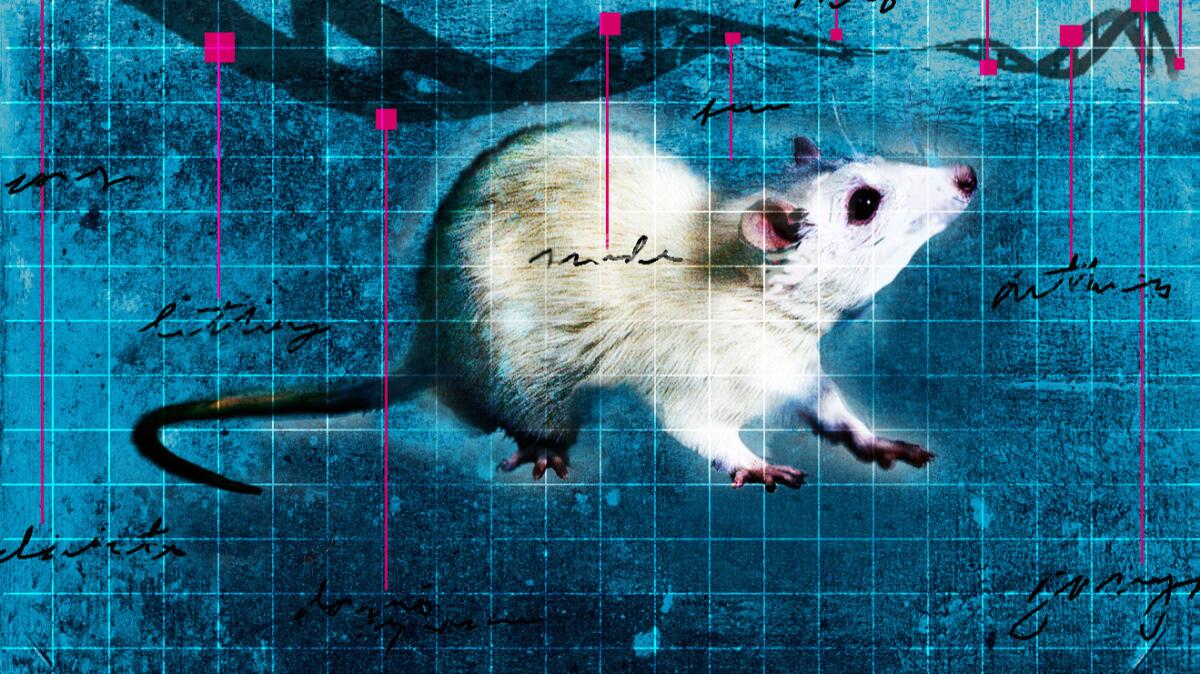Editorial: Why test chemicals on animals if we don’t have to?

The overhaul of a 40-year-old law governing the testing of chemicals used in industrial and commercial products has won a lot of praise recently for giving the Environmental Protection Agency far more regulatory control over many more substances. But it is also being praised by animal welfare advocates for a landmark provision that could reduce dramatically the use of animals in the process of testing chemicals for safety. The rewritten law, signed by President Obama late last month, requires the EPA to help develop scientifically sound alternative methods to animal testing and to encourage chemical companies to follow them. This new regulatory philosophy is not just humane; it is also smart, prudent and a reflection of the remarkable advances in chemical testing that are producing better results than those obtained by torturous testing over the years on rabbits, guinea pigs, rats and mice.
The new law revamps the Toxic Substances Control Act, which covers chemicals found in paints and thinners, wood varnish, plastics, and furniture, among other products. It instructs the EPA administrator to “reduce and replace” the use of vertebrate animals in the testing of chemicals by encouraging and facilitating alternative methods. It also urges joint testing by multiple companies to avoid duplication of tests. The agency must do some of its own studies to accelerate the development of new test methods, and it must create a list of methods companies can use. And when companies do any voluntary chemical testing — the result of which they want to submit to the EPA — they will be required to try, first, a non-animal method if the EPA lists it as a feasible alternative for the study being done.
There was a time when dosing and contaminating animals with often toxic levels of chemicals was horrible for them but imperative for human health and safety. But now that our safety can be protected without inflicting pain or death on an animal — whether rabbit or rat — continuing to do these tests would simply be cruel and inhumane.
The changes in the EPA guidelines have been well-received not only by animal welfare organizations but also by the chemical industry. And industry officials have said that they are willing to share the technology involved in alternative testing with each other.
Just as the National Institutes of Health retired its chimpanzees from research because state-of-the-art science had found alternatives to testing on them, scientists have now found alternatives in many cases to animal tests for chemical substances. Testing chemicals for skin irritation no longer requires that rabbits be subjected to toxic levels of the substances. These days, researchers can grow human skin cells in vitro test the chemicals on them. The results are more relevant to human safety since they were tested on human cells, not rabbits. Similarly, eye irritation tests don’t require a live animal’s eyes anymore. Corneas can be cultured in vitro for testing. Or the eyes of animals already slaughtered for food can be used for testing.
There remain some areas of safety testing for which there is no alternative other than to test on animals. Testing the carcinogenicity of a chemical is still generally done by chronically exposing animals to it. However, scientists are working on methods that don’t involve constantly dosing a rat or mouse for a year or two then killing it to see if there are signs of tumors.
The purpose of this new law is not to make animal welfare a priority over human safety. The idea is to discourage animal testing when there are better alternatives. That’s not just good for animals, that’s good for people.
Follow the Opinion section on Twitter @latimesopinion or Facebook
More to Read
A cure for the common opinion
Get thought-provoking perspectives with our weekly newsletter.
You may occasionally receive promotional content from the Los Angeles Times.










